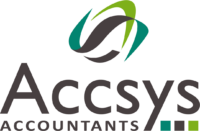
We are all operating in a new normal – business will never be the same again.
In a strange parody of its effect on health, Covid-19 has had no effect on some businesses, and some have been devastated.
For those businesses that have been devastated, where there has been a downturn in business, things must change for them to survive. The first thing to look at is costs and how to reduce them.
This blog looks at how to go about cutting costs without cutting so much that the business suffers.
Your New Breakeven Point
The first step is to calculate your new breakeven point. Breakeven is how much turnover/sales you need to make, monthly, to make zero profit.
Of course, Zero profit is not the aim; however, you need to know what your baseline sales are. You can then target to achieve more than this.
To calculate breakeven, you need to know the following:
- Your monthly overhead (fixed costs)
- Your GP% – Gross Profit = Sales minus Direct Cost (Fixed Cost)
Once you do simply divide Your Overhead by your GP%
For example, if your monthly overhead is £5,000 and your GP% (Sales – Cost of Sales / 100) is 35% then 5000 / 35% = £14,285.
So, this business would need to sell £14,285 @ 35% to make Xero profit to cover a £5,000 overhead.
Average Daily Turnover
You can then take your £14,285 divided by the average working days in a month (around 20) to get your Average daily turnover – in this case, £14,285 / 20 = £714.
You now know that unless you make sales of £714 a day, for every working day, you will not cover your costs.
So why is this important?
You can now turn this on its head – if you know you are only making sales of £10,000 a month under the new normal you can now calculate what overhead your business can justify.
£10,000 multiplied by 35% is £3,500. Therefore, your overhead is any more than this; you will be making a loss.
Accsys Note – If you are a client of Accsys Accountants, please contact your Client Manager who will be happy to help you with these calculations.
Cutting Costs
Once you know how much your overhead needs to be, you can start to trim costs to a level that means the business is viable.
The best way to cut costs is a line by line basis, review every cost your business suffers and put a stop to any that are not 100% necessary. Cancel that subscription you have stopped using, renegotiate with suppliers of electricity, gas etc. in short, review each cost to see what can go or can be reduced.
The staff issue
The biggest costs for most businesses are their employees and the employees you have during the good times may not be justifiable in a downturn.
Redundancy is never a good thing to contemplate especially when you have good, loyal employees but you have to try and take the emotion out of the decision because if the business isn’t sustainable, then you have to cut the cost to survive.
It’s important here to understand what it will cost you to make your employees redundant – you can use the government’s calculator for each employee to understand what payments they are entitled to https://www.gov.uk/calculate-your-redundancy-pay
Accsys Note – if you need help calculating redundancy costs, then please call your Client Manager who will be happy to help
A good bookkeeping system goes a long way…
We ensure all of our clients keep a good set of books for these very reasons – if you are watching the pounds and pence closely you will have a good handle on things when it comes to making the hard decisions.
If you don’t have a good set of books and don’t have a handle on the business, then contact us, and we will be happy to help get you back on track.
Whatever happens over the next 6-9 months, those business who are lean and those with a good handle on their finances will survive.
To discuss this blog or anything else, please email will@accsysltd.couk or call on 10622 671 835.






